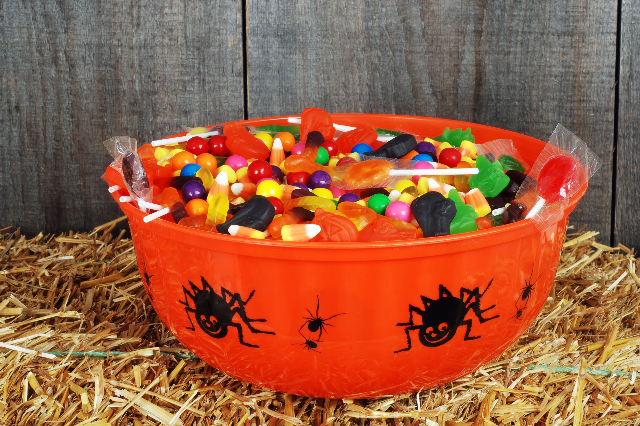Tips for ensuring Halloween is more safe and fun than scary
Halloween is almost here, and with it comes all sorts of pretend-scary stuff.
But celebrating Halloween can involve dealing with some real-scary stuff, too. How can parents avoid all that stuff and make this Halloween a safe and healthy one for kids?
First, take care when choosing or assembling kids' costumes. "Probably the biggest thing there is, you don't want to have something that's potentially going to obstruct vision in any way," says Dr. Andrew Eisen, an associate professor of pediatrics at Touro University Nevada College of Osteopathic Medicine.
"I'm not a big fan of masks. Nontoxic makeup, that's fine," Eisen says. But avoid "anything around the eyes in particular because, as they walk around, the sun's going down and they may not see something right in front of them and trip and fall."
Look for costumes with reflective touches, or add a few bits of reflective tape to the costume, and make sure all costumes and costume components are flame-resistant.
Think about accessories, too, and leave swords, canes and other pointed or potentially harmful accessories at home.
"Even something that's not pointed, if it's too long or too heavy, it's a big risk for children either tripping over it themselves or tripping someone or hitting someone else."
Leave pumpkin-carving to adults. That "seems obvious," Eisen says, "but we have kids who get hand injuries all the time trying to carve pumpkins. So, you can have the child draw the face, and then have adults actually do the carving."
Then, light carved pumpkins with glow sticks or flashlights, not candles and anything else with actual flames, Eisen says.
Make sure that the walkway from the sidewalk to your door is clear of obstructions — garden hoses, toys, other items — and that it's "appropriately lit," Eisen says.
Rather than keeping things dark to create a creepy ambience, use nonflammable filters or colored light bulbs. "One thing I do at my home is, I take out the (lights) ... and put in black light," Eisen says. "It gives you a spooky feel, but you can still see."
While trick or treating, appoint one adult to keep a lookout for potential hazards kids might not see.
"The most common injuries on Halloween are related to pedestrians," Eisen says, including "injuries from walking to the door, and tripping and falling, or getting struck by motorists."
Trick or treat only at houses where the lights are on. "If there aren't lights on the outside of the house, just skip it," Eisen says. "And if somebody has decided they want to have all the lights off, that's a bad choice and people shouldn't stop there.
Don't allow kids to eat the treats they've scored until Mom and Dad can check them out first.
"The risk is very, very low of candy being tampered with, but it's still a great idea to have a rule with your kids that nothing they pick up gets eaten until they get home and an adult goes through it," Eisen says. "If anything has been opened or isn't securely wrapped, it should just go. It's not worth with it."
Finally, set limits on how much candy a child can eat each day, as well as "a time limit, (that) once we get to this point on the calendar, we're just going to dump the rest of the candy."
For more tips, visit the American Academy of Pediatrics' Web page.

















